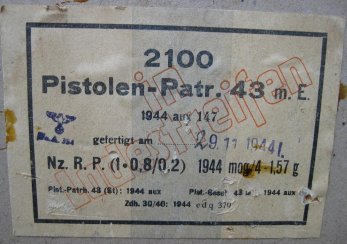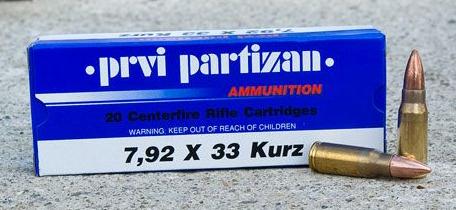The "kurz" Patrone
The "kurz" ammo was a vital part of the success of the MP44 concept. This ammo was in a very short supply during the war and is difficult to purchase today.
The kurz and it's "parent" 8x57IS
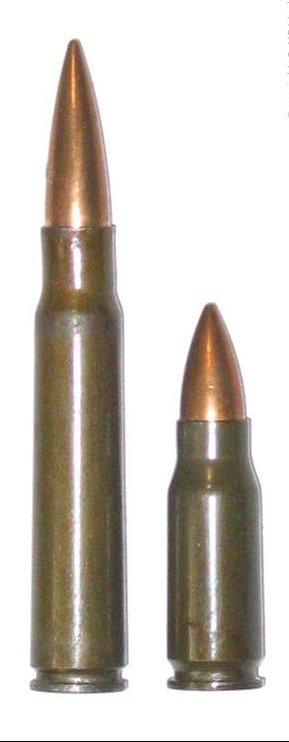

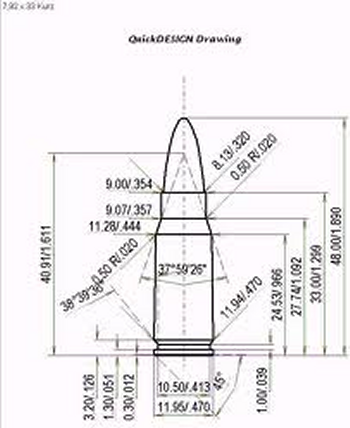
German army studies had shown that few combat engagements occured at more than 300 m and the majority within 200 m. The German standard ammunition - 8x57JS - was capable to kill beyond 1500 m. A rifle fired that ammo in shot bursts was impossible to control. The MP40 - using 9 mm parabellum ammo - was easy to control, but only effective at shorter distances; perhaps 20 m and indeed not 200 m. So the Germans invented a new intermediate cartridge: 8 mm kurz. Same diameter as the 8x57JS but much shorter, 48.0 versus 80.6 mm.
See below the huge gap in energy between the 9 mm para MP ammunition and the 8x57JS rifle ammunition:
| Energy/Joule: | 9mm para MP | 8mm kurz | 8x57JS - sS |
| 0 meter | 556 | 1877 | 3603 |
| 100 meters | 399 | 1328 | 3154 |
| 200 meters | 286 | 919 | 2797 |
| 300 meters | 205 | 634 | 2433 |
The 15 rd. box was standard but at first "aux" used 20 rd. boxes. "ak", "hla" and "wa" used at the beginning 14 rd. boxes.
At the top a rare box with Mkb42 ammo. Below 3 boxes with stripper clips i.L. (in Ladestreifen) - and one more common box with 15 rounds and no stripper clips. The last production was without stripper clips and in many cases without labels. On the right side a box with DDR ammo made in 1959.
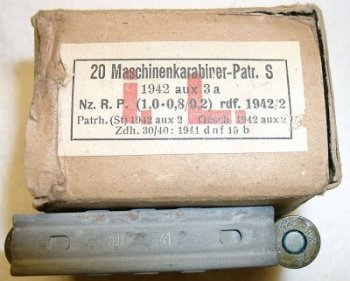
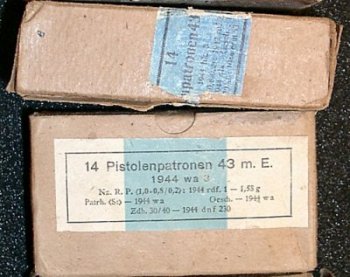
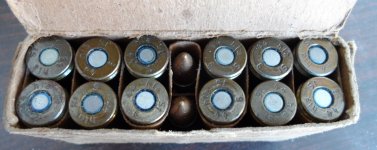
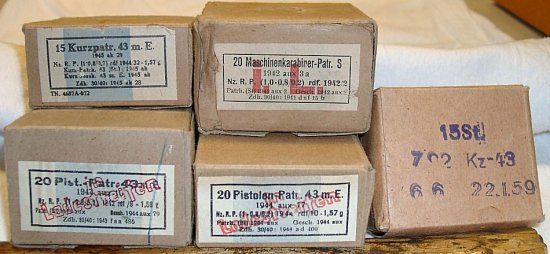
German produced ammo was later reboxed by:
Czech Republic - see below
Greece
Yugoslavia
It was produceed by:
DDR: Factory 04 (VEB Königswartha) from 1958 to 1961. Brass DDR cases are known but are rare.
Czech Republic - see below
Spain - see more below
Argentina - see below
The DDR produced kurz - left photo and relabeled Wehrmacht ammo - right photo. For export because of the English text? The DDR boxed ammo were in many cases just with an ink-stamp without label - see above.
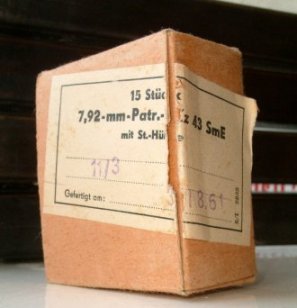

Czech produced kurz ammo. Peter Senich doesn't
mention this variant but Daniel Kent has a note on it. (A strange thing:
the box itself is made in Dresden in 1944)

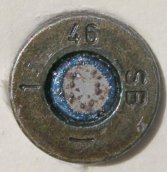

Czech repacked kurz ammo
made in The Third Reich - see below. The label says: 7,92 short ammo mod. MP43, produced in 1945 (1946 above - first photo), packed in 1955 - and used within
6 months, 15 pc. Last photo above: (SB = Sellier & Ballot) 15 pc. 7,92 short ammo mod. MP43, lot #57
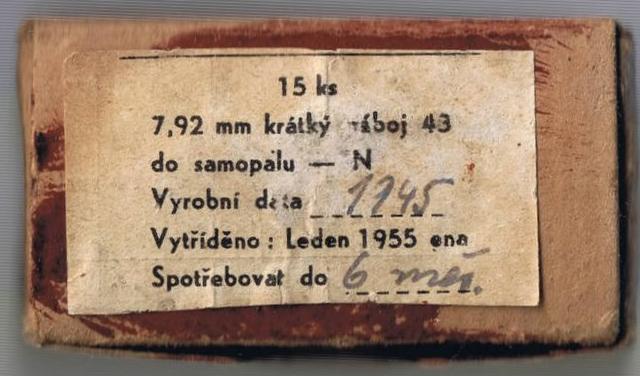
Old German "kurz" box (marked "ggk") used as "provisional package" for
Czech 7.62x45 ammo in 1951. bxn means: Sellier & Bellot, Vlazim.
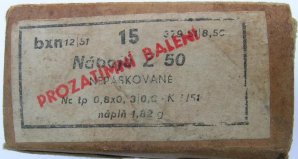
Greek repacked kurz ammo made in 1946?
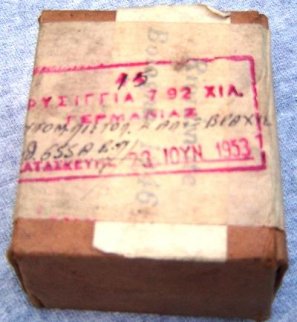
German kurz headstamps and lot numbers
A comprehensive and good description of kurz ammo (from Italy)
The Spanish made kurz
German technichians continued after the war their work in Spain with a rifle with delayed blowback. This Cetme
rifle was initially chambered for the kurz patrone. So the Spanish developed in 1951 (or earlier) different kurz cartridge types, for example full metal jacket
and tracer ammo. A few years later the Cetme rifle adopted the 7,62 mm Nato cartridge, so the kurz cartridges were
only made for tests and are consequently rare. The code FNP means "Fábrica Nacional de Palencia".
The Cetme rifle became later the G3 rifle. The FAL rifle flirted in the first versions also with the kurz. But again here was overruled by
a NATO decision.


| See much more about this rare round |
The Argentinian made kurz
They experimented also with the kurz-patrone in Argentina.

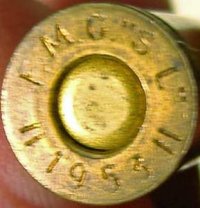
| See more about this rare round |
A wooden box for the
kurz ammo
The same type of box was used for 1500 rounds
8x57JS or 4120 rounds 9 mm. On the right side a rather rare box used for
900 rounds 8x57JS - 3 battle packs.
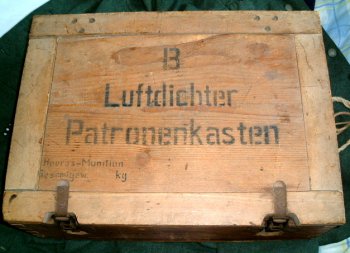
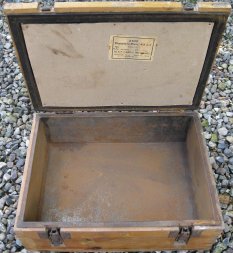
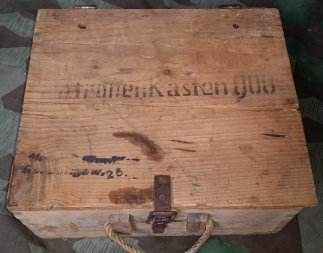
Not so common are: 2000 (5 x 400), 2250 (5 x 450) and 2400 (5 x 480). Again on the right side a box with 3 Trageschlaufen (3 x 420) - and 1350 is also
seen (3 x 450).

